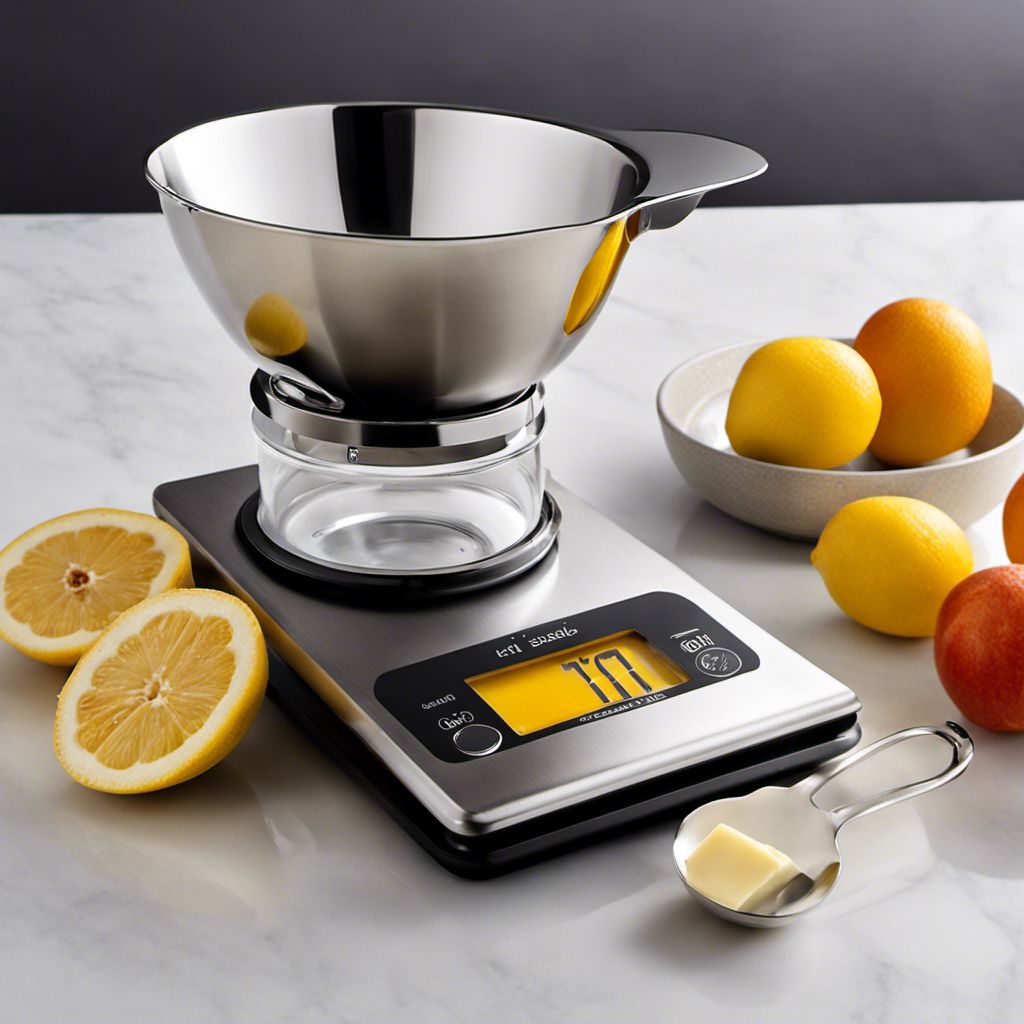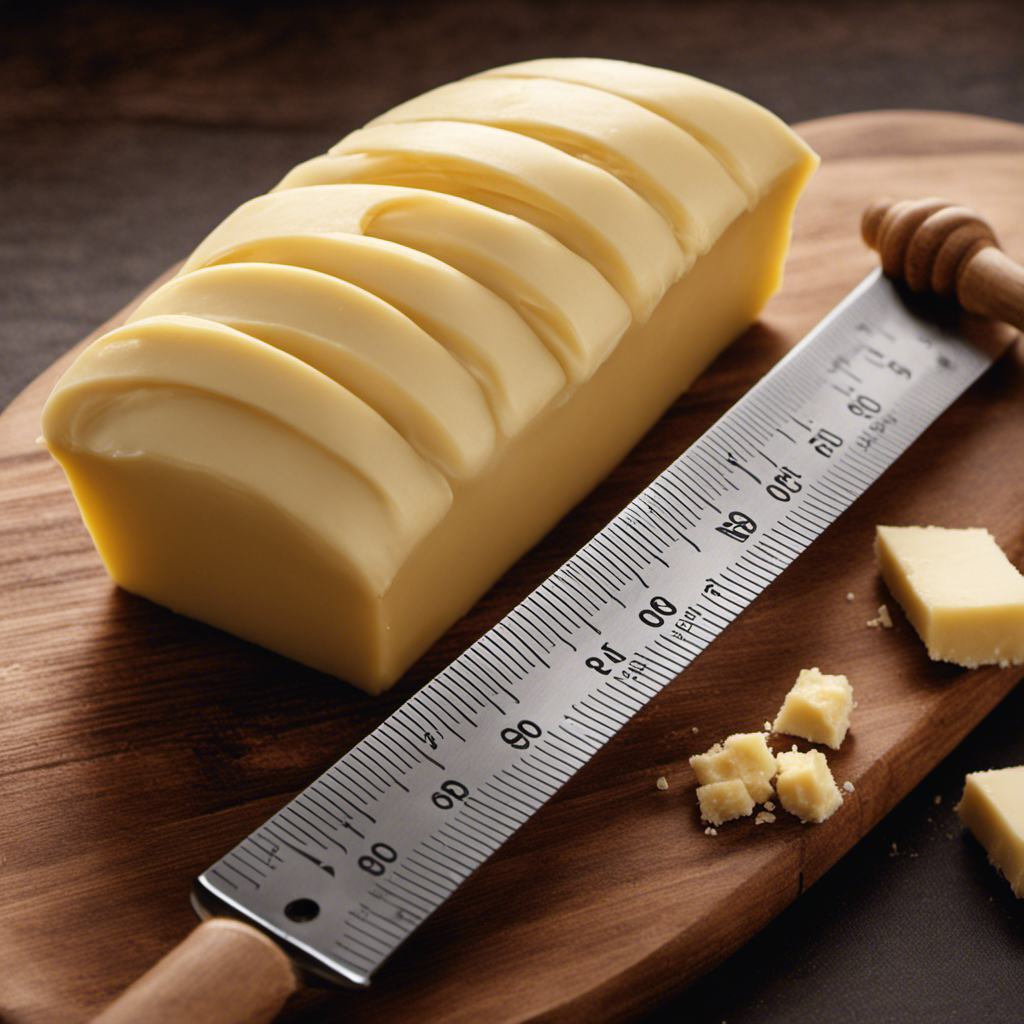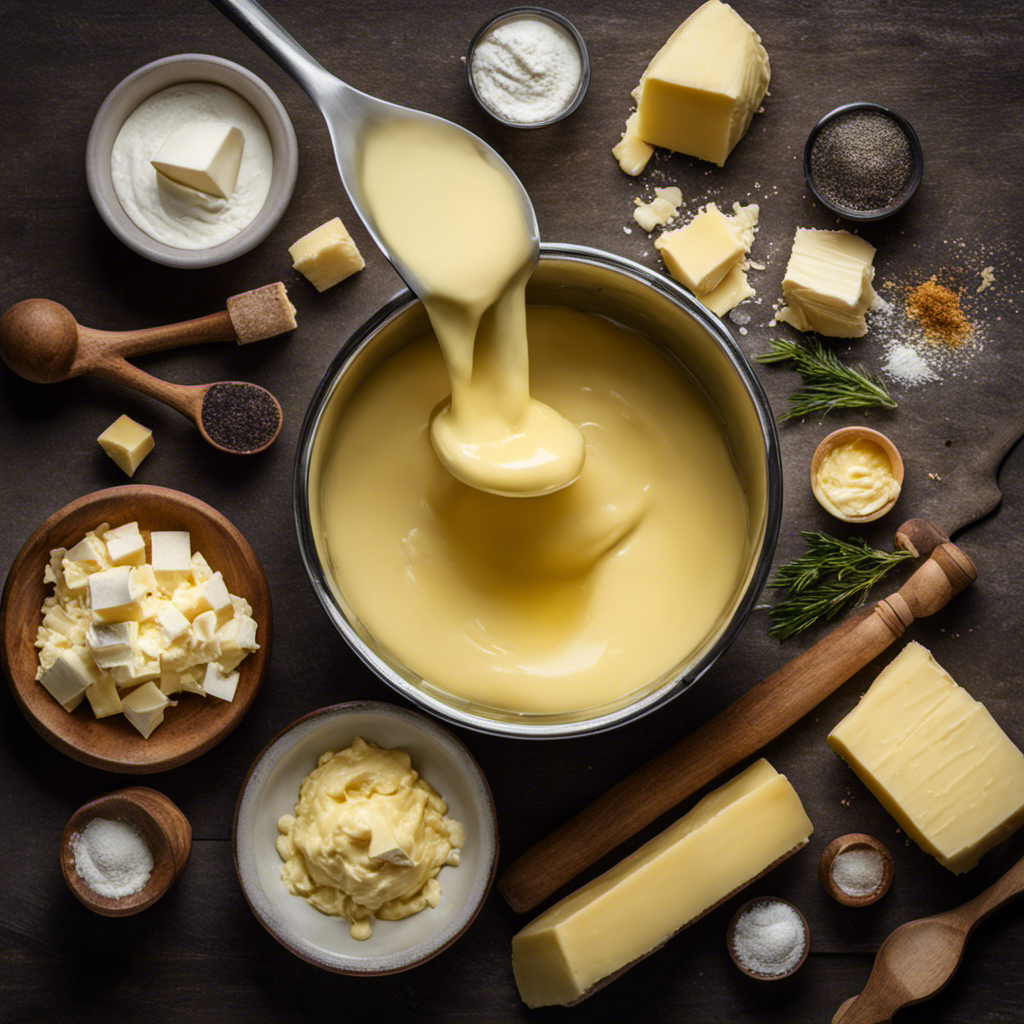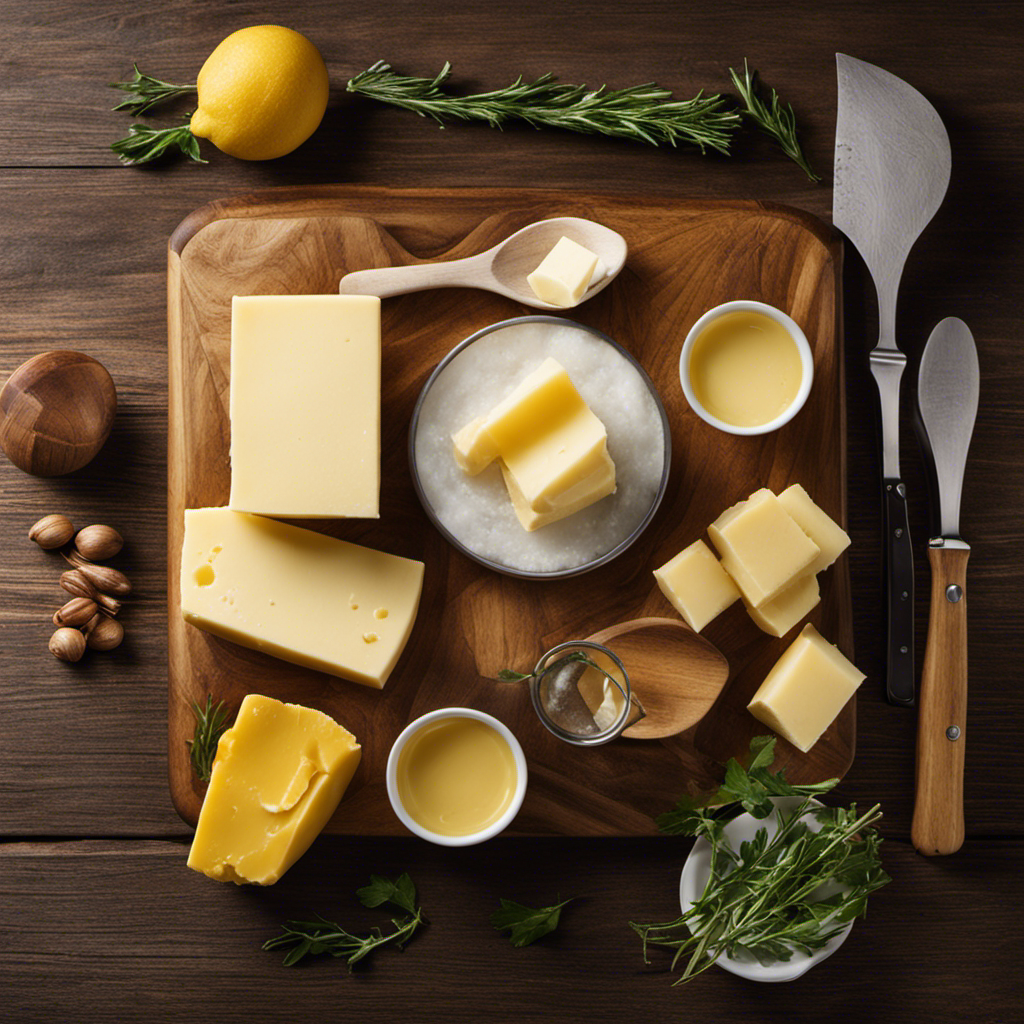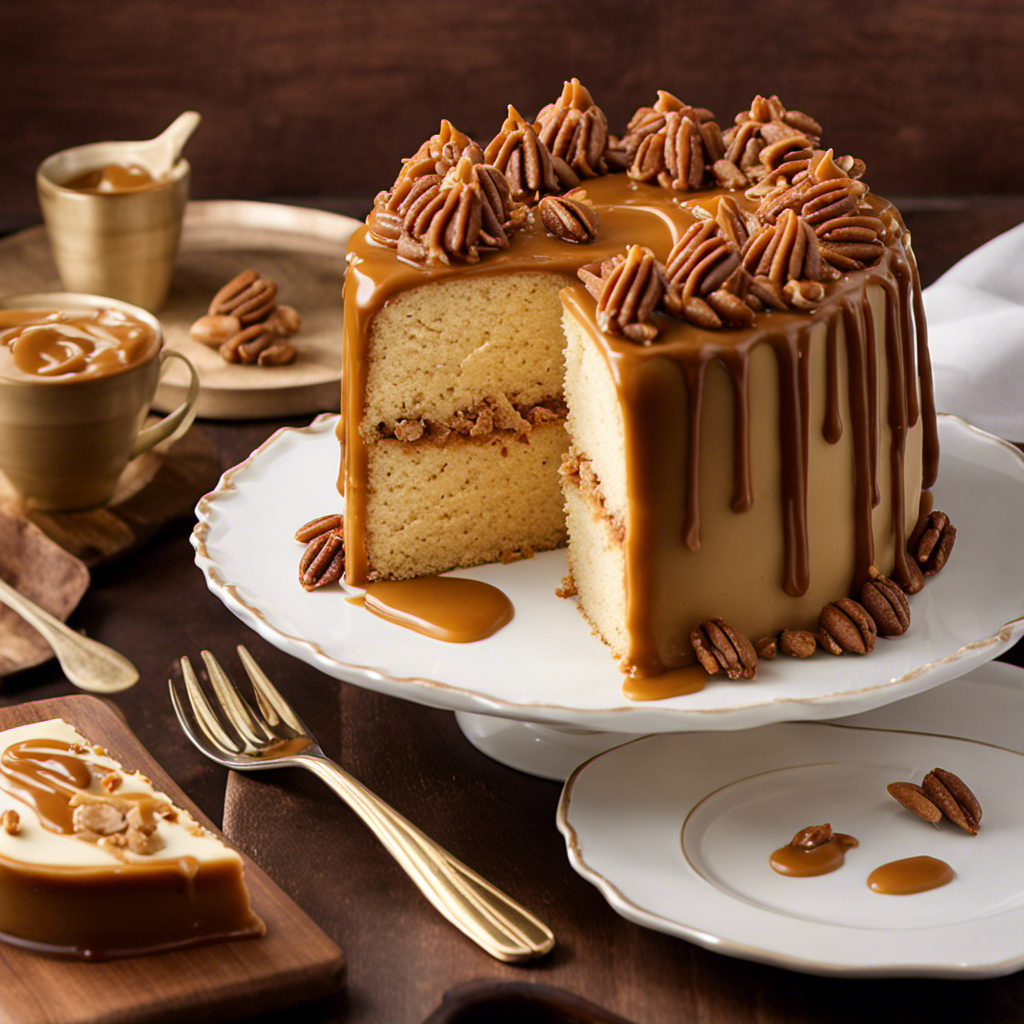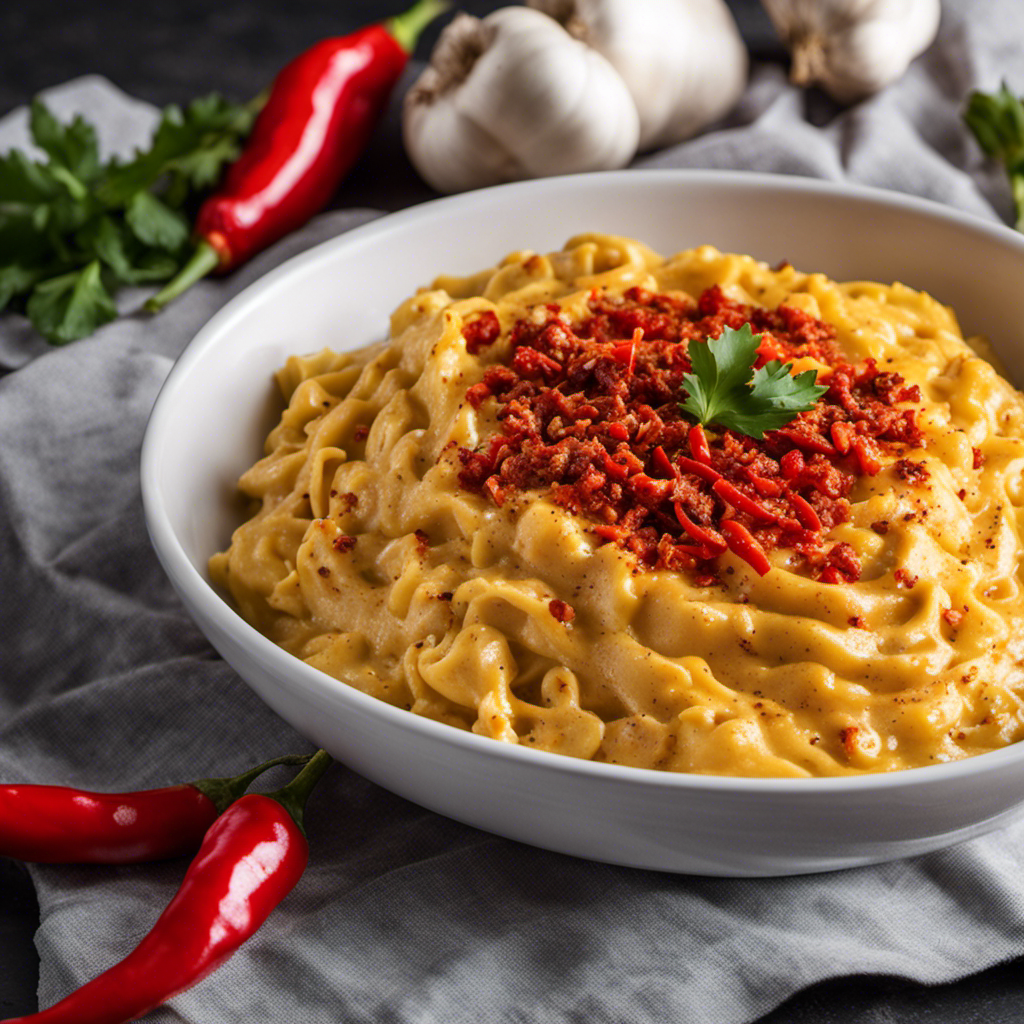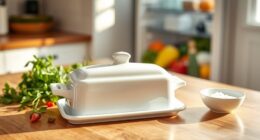I understand your thoughts – why is it important to know the weight of 2/3 cup of butter? Let me explain, knowing the weight of butter is essential for accurate baking and cooking.
In this article, we’ll delve into the science behind converting 2/3 cup of butter to weight. We’ll explore the factors that affect the weight of butter and provide helpful tips for accurate measurements.
So, let’s dive in and discover the secrets to perfectly measured butter!
Key Takeaways
- 2/3 cup of butter typically weighs around 150 grams.
- Using a kitchen scale provides the most accurate measurement for butter.
- Measuring spoons can be used for recipes that call for tablespoons or teaspoons of butter.
- Understanding the impact of temperature and density on butter weight ensures accurate measurements.
Understanding the Measurement of Butter
Butter is commonly measured in cups, and it is important to understand how much it weighs. When it comes to measuring butter accurately, precise measurements are crucial. This is especially true in baking, where the right amount of butter can greatly affect the outcome of a recipe.
In order to achieve the desired texture and taste, it is essential to accurately measure the weight of the butter. By using a kitchen scale, you can ensure that you are adding the correct amount of butter to your recipe. This precision allows for consistent results and ensures that your baked goods turn out perfectly every time.
Now, let’s delve into the process of converting 2/3 cup of butter to weight.
Converting 2/3 Cup Butter to Weight
When it comes to baking, precision is key. To ensure accurate conversions, it is essential to understand the butter weight ratio. This guarantees that your recipe will turn out just right, every time.
Additionally, if you’re considering substituting butter with margarine, it’s important to know the potential impact on the final outcome of your baked goods.
Butter Weight Ratio
To determine the weight of 2/3 cup of butter, you’ll need to know the butter weight ratio. Butter weight conversion can be a tricky task, especially when recipes call for specific measurements like cups. However, understanding the butter weight ratio can help you accurately convert 2/3 cup of butter into its weight equivalent.
The butter weight ratio is commonly used as a reference point to convert alternative butter measurements, such as tablespoons or grams, to cups. By knowing the ratio, you can confidently calculate the weight of 2/3 cup of butter and ensure that your recipe turns out just right.
Now, let’s explore how we can guarantee the accuracy of these conversions.
Conversion Accuracy Guarantee
To guarantee the accuracy of your conversions, it’s important to double-check your measurements and use a reliable conversion chart. When it comes to butter conversions, precision is key.
Here are some butter conversion tips to help you get the measurements right every time:
- Always measure butter in its solid form, unless the recipe specifically calls for melted butter.
- Use a kitchen scale for the most accurate measurements. This is especially important when substituting butter in recipes that require precise measurements.
- When substituting butter with another ingredient, such as oil or margarine, make sure to adjust the quantity accordingly. A reliable conversion chart can help you determine the correct amount.
Substituting With Margarine?
Substituting with margarine? Make sure to adjust the quantity accordingly when using margarine in place of butter. While margarine can be a suitable substitute for butter in many recipes, it’s important to be aware of the pros and cons.
| Pros | Cons |
|---|---|
| Lower in saturated fat | Higher in trans fats |
| Cholesterol-free | May contain additives |
| More affordable | Different taste and texture |
One of the main advantages of substituting margarine for butter is that it is lower in saturated fat and cholesterol-free. This makes it a healthier option for those watching their fat intake. Additionally, margarine tends to be more affordable than butter, making it a budget-friendly choice. However, it’s worth noting that margarine often contains trans fats, which can increase the risk of heart disease. Margarine also has a different taste and texture compared to butter, which may affect the overall flavor and consistency of the dish. So, when substituting margarine for butter, consider the pros and cons to ensure the best results in your recipe.
The Importance of Accurate Butter Measurements
Accurate butter measurements are important when baking. To achieve the perfect texture and taste in your baked goods, precise measurements are crucial. Here are some butter measurement techniques that ensure precision in baking:
-
Use a kitchen scale: Weighing the butter with a scale provides the most accurate measurement, as butter density can vary.
-
Use measuring spoons: If a recipe calls for tablespoons or teaspoons of butter, using measuring spoons can help achieve the desired amount.
-
Use the measurement markings on the butter packaging: Many butter packages have measurements marked on the wrapper, making it easier to measure the required amount.
These techniques help maintain consistency in your baking and ensure that the butter is used in the correct proportion.
Now, let’s explore the factors affecting the weight of butter.
Factors Affecting the Weight of Butter
Using a kitchen scale provides the most precise measurement for butter, as factors like temperature and density can affect its weight. To understand the impact of these factors on butter weight, let’s take a look at the table below:
| Factor | Effect on Weight |
|---|---|
| Temperature | Cold butter is denser and weighs more than warm butter. |
| Density | Different brands or types of butter can have varying densities, leading to slight differences in weight. |
Tips for Measuring 2/3 Cup Butter by Weight
When it comes to accurately weighing butter, there are a few key points to consider.
First, it’s important to ensure that your scale is calibrated correctly to ensure precise measurements.
Second, converting cups to grams can be a helpful way to achieve accuracy, as grams provide a more precise measurement than cups.
Lastly, understanding the specific weight of butter can help you achieve consistent results in your recipes.
Accuracy of Butter Weighing
Measuring butter weight can be tricky, but it’s important to be precise. To ensure accuracy of measurements, there are several benefits of using a kitchen scale:
-
Consistency: A kitchen scale allows for consistent measurements every time, ensuring that your recipes turn out the same way each time you make them.
-
Flexibility: Using a kitchen scale opens up a world of possibilities by allowing you to easily convert between different units of measurement, such as grams and ounces.
-
Efficiency: By measuring butter by weight, you can skip the step of softening or melting it, saving time and effort.
Using a kitchen scale provides the accuracy needed for successful baking and cooking.
Now, let’s delve into the next section where we will explore the process of converting cups to grams.
Converting Cups to Grams
Converting cups to grams can be a useful skill for accurately following recipes. When it comes to converting cups to ounces, it’s important to know that one cup is equal to 8 fluid ounces.
However, when converting butter measurements, things can get a bit trickier. Butter is denser than water, so the conversion is not a simple 1:1 ratio. Instead, one cup of butter weighs approximately 227 grams or 8 ounces.
It’s important to note that this conversion may vary slightly depending on the brand or type of butter you are using. Understanding these conversions can help ensure that your recipes turn out just right.
Now, let’s dive into some common conversions for butter measurements.
Common Conversions for Butter Measurements
To clarify, 2/3 cup of butter typically weighs around 150 grams. This conversion is important to know when substituting butter with oil in recipes or when measuring butter in tablespoons.
Here are some common conversions for butter measurements:
- 1/4 cup of butter weighs approximately 57 grams
- 1/2 cup of butter weighs around 113 grams
- 1 cup of butter weighs about 227 grams
When substituting butter with oil, it is recommended to use 3/4 cup of oil for every 1 cup of butter required in the recipe. This ensures that the right amount of fat is maintained.
Additionally, when measuring butter in tablespoons, 1 tablespoon of butter is equivalent to about 14 grams.
These conversions are useful for precise and accurate baking or cooking, allowing for successful results every time.
Frequently Asked Questions
Can I Substitute Margarine for Butter in Recipes?
I can substitute margarine for butter in recipes. Margarine has benefits in baking, like being lower in saturated fat. To successfully substitute, use equal amounts, but consider the differences in texture and flavor.
How Much Does 1 Stick of Butter Weigh?
I can tell you that 1 stick of butter weighs approximately 1/2 cup or 113 grams. It’s important to note that butter alternatives may have different weights, and for optimal storage, keep butter refrigerated.
Does the Brand of Butter Affect Its Weight?
The brand of butter can impact its weight due to variations in butter composition. Factors such as fat content and moisture levels can differ between brands, resulting in slight variations in weight.
Is There a Difference in Weight Between Salted and Unsalted Butter?
There is a taste difference between salted and unsalted butter, with salted butter having a slightly savory flavor. Additionally, unsalted butter may have more health benefits due to its lower sodium content.
Can I Use a Kitchen Scale to Measure Butter Accurately?
Using a kitchen scale to measure ingredients has benefits and drawbacks. It provides precise measurements, ensuring accuracy in recipes. However, it may not be suitable for all ingredients, such as liquids or small quantities.
Conclusion
In conclusion, accurately measuring the weight of butter is crucial for achieving precise and delicious results in baking and cooking.
Although the conversion from cups to weight can be tricky, using a kitchen scale and following the correct measurements will ensure the perfect outcome.
Some may argue that measuring by weight takes extra time and effort, but the satisfaction of a perfectly balanced dish and the compliments it will receive from friends and family make it all worth it.
So, let’s embrace the science of measuring butter by weight and elevate our culinary skills to new heights.
